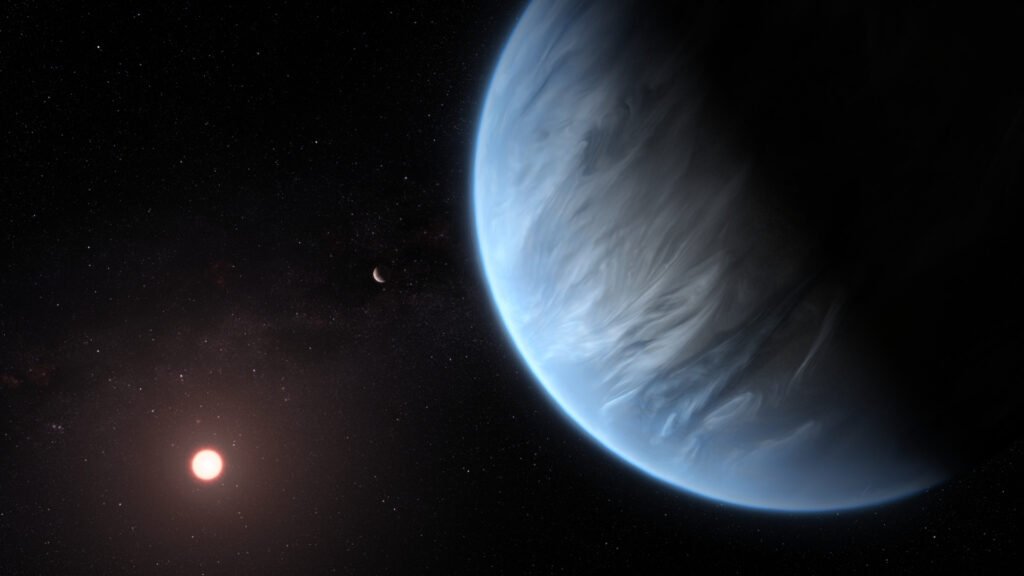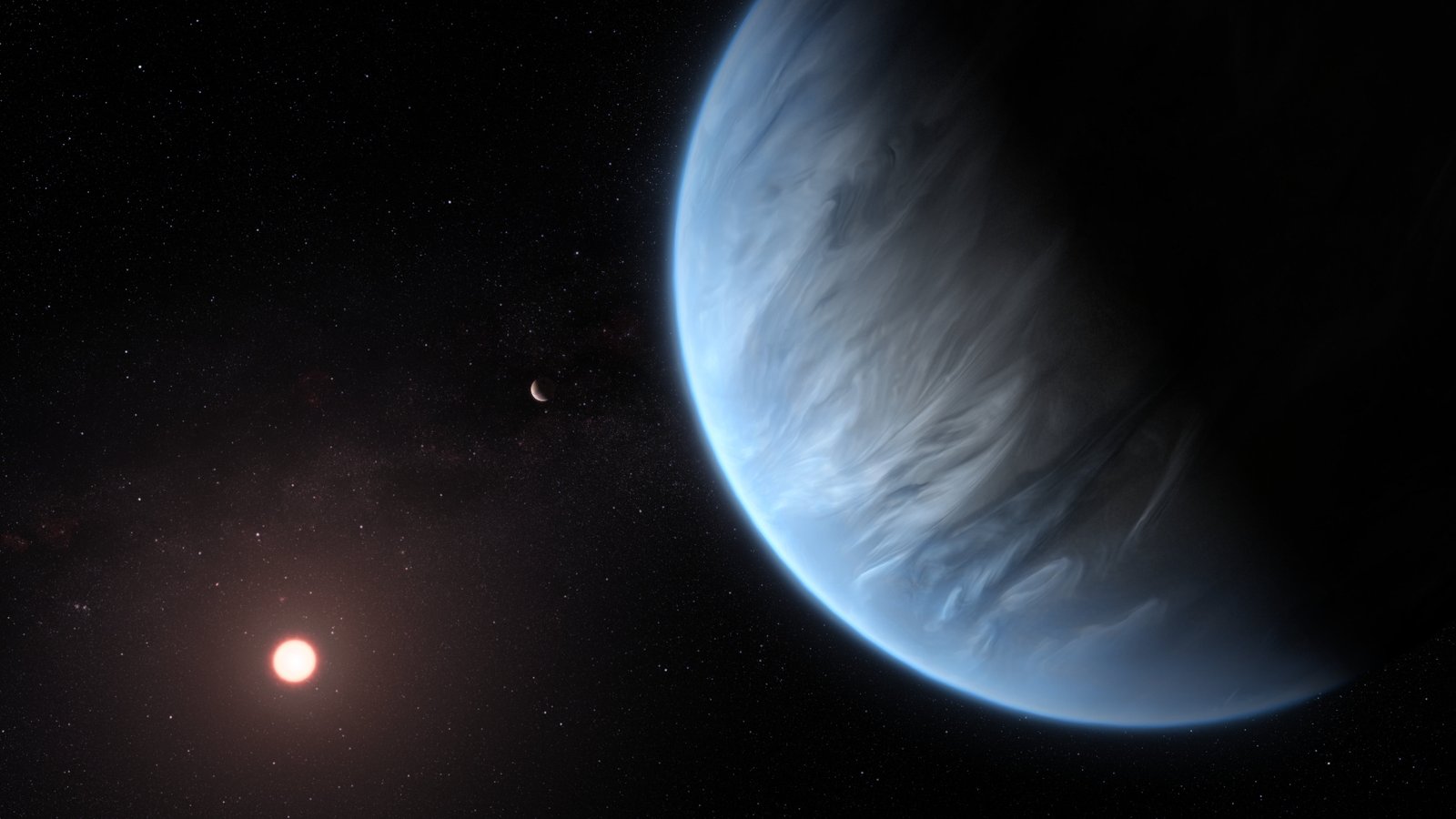K2-18b: An Intimate Look at Potential in the Search for Extraterrestrial Life
To find out if we are the only species in the cosmos, humans have been staring at the stars for decades. Recent advances in telescope technology have spurred an increased search for exoplanets, or planet orbiting stars outside of our solar system. K2-18b is a discovery that is particularly noteworthy in the ongoing search for extraterrestrial life.
A Potentially Habitable World with a Red Dwarf Star
K2-18b inhabits the livable region of its parent star, K2-18, a red dwarf star that is situated approximately 1,100 light-years from Earth. Red dwarfs are smaller, colder stars than our own Sun. In contrast to our solar system, a red dwarf’s habitable zone is located significantly closer to the star. This suggests that even though K2-18b is tidally locked, which means that one side of the planet is constantly facing the star, liquid water—a necessary component of life as we know it—may exist on the planet’s colder night side.
Exceeding Simple Water: Revealing the Enigmas of K2-18b’s Ambient
Although liquid water is a big step, the makeup of K2-18b’s atmosphere determines the true possibility for life. An atmosphere dense with water vapour is suggested by early observations. But the crucial query still stands: is it breathable? Is the mixture of gases, such as oxygen and methane, appropriate for supporting life there?
James Webb Space Telescope: An Effective Instrument for Revealing Secrets
This is where JWST, the James Webb Space Telescope, is useful. The capacity to examine exoplanet atmospheres and look for chemical traces, or biosignatures, that might point to biological activity, is a remarkable feat of contemporary astronomy. By examining the light passing through K2-18b’s atmosphere, the JWST may be able to reveal the existence of these biosignatures and therefore redefine what it means to be “habitable.”
Beyond Earth-Like Replicas: A Universe of Possibilities
Discovering an identical replica of Earth is not the goal of the hunt for extraterrestrial life. The aim is to investigate the astounding variety of worlds found in our enormous cosmos. K2-18b may be unlike any planet we have ever seen due to its tidally locked characteristics and possible water world. However, it would completely change our notion of what makes a place habitable if life managed to flourish there.
The Tour Continues: A Star of Hope in the Universe
The enormous potential that exists beyond our solar system is brought to light by K2-18b. It appears less like science fiction and more like an exciting fact just waiting to be uncovered that life may exist on other planets thanks to developments in telescope technology and continuous research expeditions. K2-18b is but one stop on this amazing exploratory voyage; the universe is huge and full of possibilities.

Share this content:
